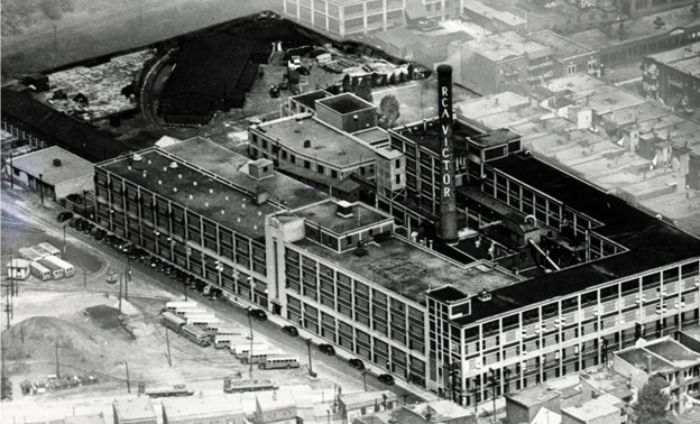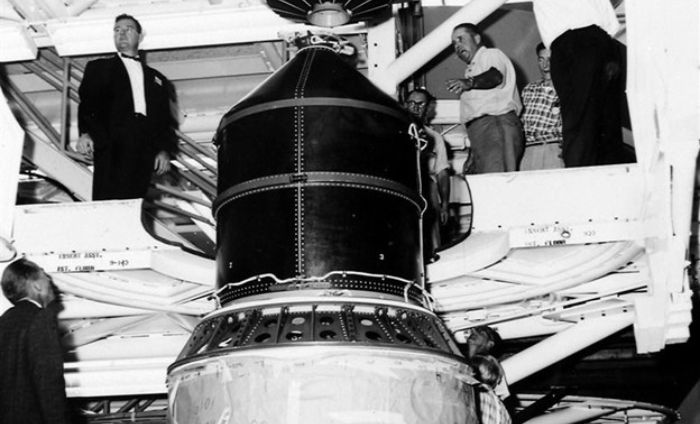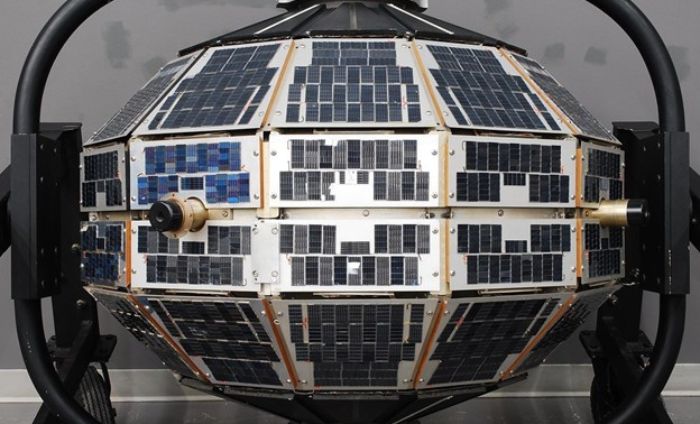December 2025
HOW ONE MONTREAL COMPANY WENT FROM SPINNING RECORDS TO ORBITING THE EARTH.
Long before anyone dreamed of Wi-Fi, rocket launches or Spotify playlists, a curious inventor named Émile Berliner arrived in North America with a head full of ideas and a pocketful of patents. It was the turn of the 20th century, and Berliner had just changed the world of sound forever: he had invented the gramophone, the first device to play recorded music on flat discs instead of wax cylinders.
But Berliner wasn’t one to rest on his laurels. In 1904, he looked north and founded The Berliner Gram-o-phone Company of Canada, setting up shop in Montreal. The factory, a red brick building near the Lachine Canal, became a bustling hive of engineers, craftsmen and dreamers pressing shellac records by the thousands. If you lived in Canada in the early 1900s and cranked up your gramophone to listen to the latest tunes, odds are your music spun out of that very plant.
FROM MUSIC TO MICROCHIPS
As the decades rolled on, the sounds coming out of Montreal began to change. By the 1920s, Berliner’s company had been absorbed into the mighty Victor Talking Machine Company, and soon after into RCA, the Radio Corporation of America. Out went the hand-cranked gramophones, in came radios, televisions and vacuum tubes.
During the Second World War, RCA Victor’s Montreal plant pulsed with wartime innovation, building electronics for communications and radar. By the 1950s, it had become one of the largest and most sophisticated electronics factories in the country. It was a place where Canada’s best engineers tinkered, soldered and dreamed of things that flew higher than airplanes.
A LEAP INTO SPACE
Then came the Space Age. Sputnik had just beeped its way around the Earth, and nations everywhere were scrambling to join the space race. Canada decided it would not be left behind. Who could possibly build such a machine? Enter RCA Victor, in Montreal.
In the same brick buildings where gramophones had once been pressed and radios assembled, teams of engineers got to work designing what would become Alouette I, Canada’s very first satellite. They built it from scratch: the frame, the instruments, even the delicate extendable antennas. On September 29, 1962, Alouette I hitched a ride on a NASA rocket and soared into orbit, making Canada the third nation on Earth to have its own satellite.
The engineers in Montreal had done it. Their satellite was only supposed to last a year, but it kept humming along for a full decade.
REINVENTION, OVER AND OVER
The success of Alouette I (and its sequel, Alouette II) transformed RCA Victor’s Montreal operations. What had begun as a music company became a space technology powerhouse. The division eventually spun off into Spar Aerospace, the company that later built the Canadarm, the iconic robotic arm that waved proudly from the Space Shuttle, and the Radarsat earth observation satellites.
In 1999, Spar was sold to MacDonald Dettwiler & Associates, a Canadian space technology company with a rich history of its own. The combined entities became the prime contractor for the Canadian Space Agency in robotics and satellite systems.
Today, the company operates as MDA Space and has satellite manufacturing facilities in Sainte-Anne-de-Bellevue, on the island of Montreal. Pembroke recently visited this state-of-the-art facility. We came away very optimistic about MDA’s capabilities and prospects going forward.
THE NEW SPACE RACE
The Space Race between the United States and the Soviet Union of the 1950s and 1960s culminated in the Apollo 11 lunar landing, with activity waning for half a century thereafter. However, we are now in the midst of a new space race, driven by rapid technological advancements and rising geopolitical tensions.
In terms of technology, a dramatic decrease in satellite launch costs has opened up space from both a commercial and military standpoint. With costs on a per kilogram basis estimated to have fallen by well over 90% with the advent of reusable launch vehicles, applications that were prohibitively expensive for commercial and government customers became viable in short order.
As such, significant amounts of capital are flowing to fund endeavours that were previously out of economic reach. This is leading to tremendous growth opportunities to space industry participants, such as MDA.
On the geopolitical front, the post-Cold War thawing of geopolitical tensions has ended. Global affairs are now trending towards a multi-polar world. Space is proving to be a critical frontier both strategically and militarily. Therefore, governments are staking their claims with urgency.
Moreover, the conflict in Ukraine is highlighting the pivotal role that satellite infrastructure plays in increasingly technology-driven combat operations. In a world where both traditional adversaries and allies are viewed with a skeptical eye, reliable suppliers like MDA are poised to win business.
THE OPPORTUNITY AT MDA
The decades of institutional knowledge garnered at Spar Aerospace and MacDonald Dettwiler put MDA in an enviable position to capitalize upon the strong secular demand enjoyed by the space industry. The company has won an impressive portfolio of contracts spanning multiple facets of the space ecosystem, and we anticipate future wins as opportunities continue to arise.
MDA has embarked on an ambitious expansion of its manufacturing facilities in Quebec. Upon completion, the company will have the ability to manufacture two data network satellites every day, to meet a burgeoning demand.
While MDA shares have been volatile in 2025, with upswings and downswings related to customer contracting activity, we are confident that the company’s long-term trajectory of earnings and cash flow remains very solid.
Other Articles Of Interest
Disclaimer
This report is for the purpose of providing some insight into Pembroke and the Pembroke funds. Past performance is not indicative of future returns. Any securities listed herein, are for informational purposes only and are not intended and should not be construed as investment advice nor is it a recommendation to buy or sell any particular security. Factual information has been taken from sources we believe to be reliable, but its accuracy, completeness or interpretation cannot be guaranteed. Pembroke seeks to ensure that the content of this document is correct and up to date but does not guarantee that the content is accurate and complete and does not assume any responsibility for this. Pembroke is not responsible for decisions or actions taken or made on the basis of information contained in this document.





